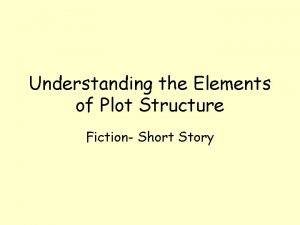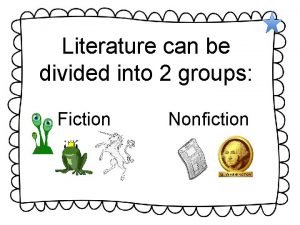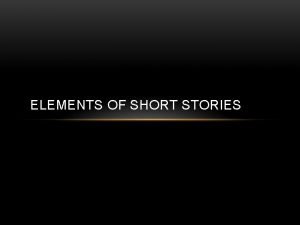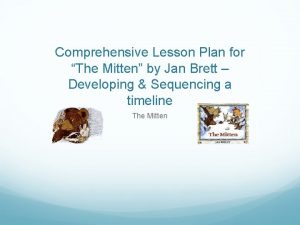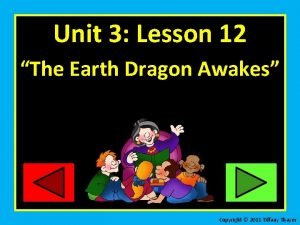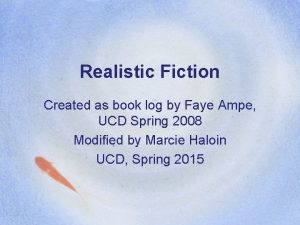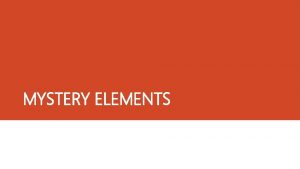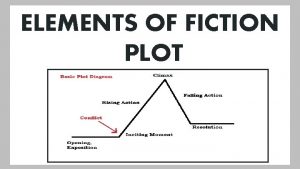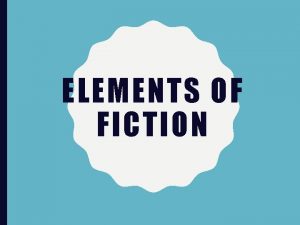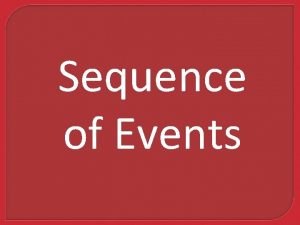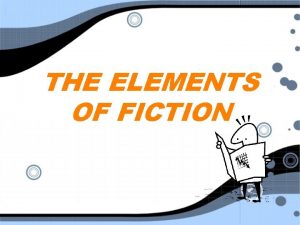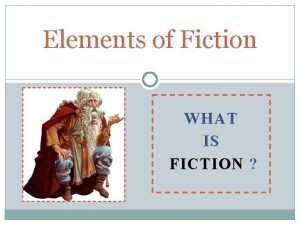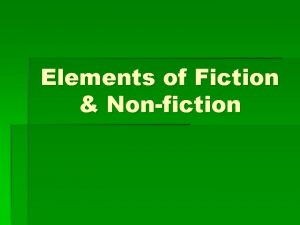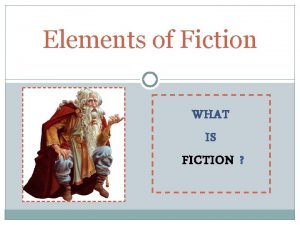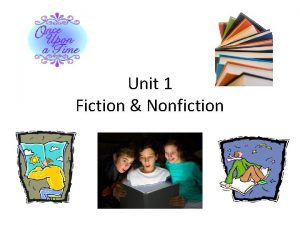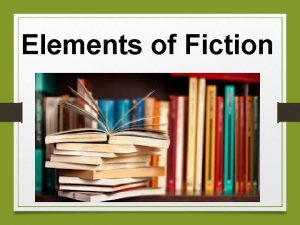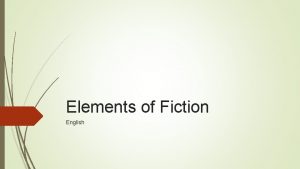Elements of Fiction Plot Plot sequence of events














- Slides: 14

Elements of Fiction

Plot Plot: sequence of events that make up a story

Parts of Plot Exposition – arouses reader’s interest, gives background Conflict – struggle between opposing forces (protagonist vs. antagonist “good guy” vs. “bad guy” Person v s. person Person vs. themselves Person vs. nature Person vs. society Person vs. supernatural

Parts of Plot continued Rising Action – development of the conflict Climax – turning point of the story, point of most intense interest Falling Action – aka “denouement” – events that lead to resolution Resolution – outcome of the conflict

Plot Diagram

Character is generally the central or focal element in the story

Character 4 Types of Characterization: techniques the author uses to develop a character Physical description Speech and actions of the character Direct comment from the narrator Speech and other actions of other characters

Character 4 General Types of Characters Round – complex, presented in detail Dynamic – developing and learning in the course of the story Flat – characterized by one or two traits Static – unchanged from the story’s beginning to end

Mood Developed by the setting and the atmosphere of the story: Setting – the time and place in which the story is taking place, including factors such as weather and social conditions Atmosphere – the overall feeling (vibe) which pervades the story

Point of View Omniscient – “all knowing” the author tells the story using the third person. The author knows all of what is said, done, and felt by the characters. Limited omniscient – author tells the story from the third person, however limits observations of thoughts and feelings to one character First person – one character tells the story in the first person. The reader sees and knows only as much as the narrator. Objective – the author is like a movie camera, moves around, freely recording objects. The author offers no comment about the thoughts/feelings/actions of the characters.

Theme The theme of a work of fiction is a universal idea or message that stretches through an entire story. A theme may show up in a pattern (such as reoccurring examples of beauty in simplicity) or a theme may come through as the result of a buildup (tragedy of war). It is often a lesson that we learn about life or people.

Theme A theme is not a subject (examples of subjects: love, death, betrayal). Theme is what the author is saying about a specific subject. A good way to identify theme is to think “After reading _____, the author wants me to know____”

Sample Theme Statement After reading Romeo and Juliet, Shakespeare wants me to know that love is a violent, ecstatic, overpowering force that supersedes all other values, loyalties, and emotions.

Think of A Sample Theme Statement for your favourite story or movie as a child The Lion King Cinderella Harry Potter The Hunger Games
 Elements of nonfiction prose
Elements of nonfiction prose Climax graphic organizer
Climax graphic organizer Elements of fiction plot diagram
Elements of fiction plot diagram Science fiction
Science fiction Contemporary realism literature
Contemporary realism literature Realistic fiction
Realistic fiction Mutually exclusive vs non mutually exclusive
Mutually exclusive vs non mutually exclusive Sequence of events at the neuromuscular junction
Sequence of events at the neuromuscular junction Arrangement of events in the story
Arrangement of events in the story The mitten lesson plan
The mitten lesson plan Luke goes to bat comprehension questions
Luke goes to bat comprehension questions Diskontinuierliche texte definition
Diskontinuierliche texte definition The earth dragon awakes sequence of events
The earth dragon awakes sequence of events Heartbeat sharon creech summary
Heartbeat sharon creech summary Realistic fiction elements
Realistic fiction elements


